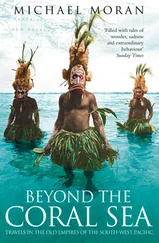From Astorga to Corunna, especially from Lugo, the mountains rise gradually. The secondary formations gently disappear, and are succeeded by the transition rocks, which indicate the proximity of primitive strata. We found considerable mountains composed of that ancient grey stone which the mineralogists of the school of Freyberg name grauwakke, and grauwakkenschiefer. I do not know whether this formation, which is not frequent in the south of Europe, has hitherto been discovered in other parts of Spain. Angular fragments of Lydian stone, scattered along the valleys, seemed to indicate that the transition schist is the basis of the strata of greywacke. Near Corunna even granitic ridges stretch as far as Cape Ortegal. These granites, which seem formerly to have been contiguous to those of Britanny and Cornwall, are perhaps the wrecks of a chain of mountains destroyed and sunk in the waves. Large and beautiful crystals of feldspar characterise this rock. Common tin ore is sometimes discovered there, but working the mines is a laborious and unprofitable operation for the inhabitants of Galicia.
The first secretary of state had recommended us very particularly to brigadier Don Raphael Clavijo, who was employed in forming new dock-yards at Corunna. He advised us to embark on board the sloop Pizarro,* (* According to the Spanish nomenclature, the Pizarro was a light frigate (fragata lijera).) which was to sail in company with the Alcudia, the packet-boat of the month of May, which, on account of the blockade, had been detained three weeks in the port. Senor Clavijo ordered the necessary arrangements to be made on board the sloop for placing our instruments, and the captain of the Pizarro received orders to stop at Teneriffe, as long as we should judge necessary to enable us to visit the port of Orotava, and ascend the peak.
We had yet ten days to wait before we embarked. During this interval, we employed ourselves in preparing the plants we had collected in the beautiful valleys of Galicia, which no naturalist had yet visited: we examined the fuci and the mollusca which the north-west winds had cast with great profusion at the foot of the steep rock, on which the lighthouse of the Tower of Hercules is built. This edifice, called also the Iron Tower, was repaired in 1788. It is ninety-two feet high, its walls are four feet and a half thick, and its construction clearly proves that it was built by the Romans. An inscription discovered near its foundation, a copy of which M. Laborde obligingly gave me, informs us, that this pharos was constructed by Caius Sevius Lupus, architect of the city of Aqua Flavia (Chaves), and that it was dedicated to Mars. Why is the Iron Tower called in the country by the name of Hercules? Was it built by the Romans on the ruins of a Greek or Phoenician edifice? Strabo, indeed, affirms that Galicia, the country of the Callaeci, had been peopled by Greek colonies. According to an extract from the geography of Spain, by Asclepiades the Myrlaean, an ancient tradition stated that the companions of Hercules had settled in these countries.
The ports of Ferrol and Corunna both communicate with one bay, so that a vessel driven by bad weather towards the coast may anchor in either, according to the wind. This advantage is invaluable where the sea is almost always tempestuous, as between capes Ortegal and Finisterre, which are the promontories Trileucum and Artabrum of ancient geography. A narrow passage, flanked by perpendicular rocks of granite, leads to the extensive basin of Ferrol. No port in Europe has so extraordinary an anchorage, from its very inland position. The narrow and tortuous passage by which vessels enter this port, has been opened, either by the irruption of the waves, or by the reiterated shocks of very violent earthquakes. In the New World, on the coasts of New Andalusia, the Laguna del Obispo (Bishop's lake) is formed exactly like the port of Ferrol. The most curious geological phenomena are often repeated at immense distances on the surface of continents; and naturalists who have examined different parts of the globe, are struck with the extreme resemblance observed in the rents on coasts, in the sinuosities of the valleys, in the aspect of the mountains, and in their distribution by groups. The accidental concurrence of the same causes must have everywhere produced the same effects; and amidst the variety of nature, an analogy of structure and form is observed in the arrangement of inanimate matter, as well as in the internal organization of plants and of animals.
Crossing from Corunna to Ferrol, over a shallow, near the White Signal, in the bay, which according to D'Anville is the Portus Magnus of the ancients, we made several experiments by means of a valved thermometrical sounding lead, on the temperature of the ocean, and on the decrement of caloric in the successive strata of water. The thermometer on the bank, and near the surface, was from 12.5 to 13.3 degrees centigrades, while in deep water it constantly marked 15 or 15.3 degrees, the air being at 12.8 degrees. The celebrated Franklin and Mr. Jonathan Williams* (* Author of a work entitled "Thermometrical Navigation," published at Philadelphia.) were the first to invite the attention of naturalists to the phenomena of the temperature of the Atlantic over shoals, and in that zone of tepid and flowing waters which runs from the gulf of Mexico to the banks of Newfoundland and the northern coasts of Europe. The observation, that the proximity of a sand-bank is indicated by a rapid descent of the temperature of the sea at its surface, is not only interesting to the naturalist, but may become also very important for the safety of navigators. The use of the thermometer ought certainly not to lead us to neglect the use of the lead; but experiments sufficiently prove, that variations of temperature, sensible to the most imperfect instruments, indicate danger long before the vessel reaches the shoals. In such cases, the frigidity of the water may induce the pilot to heave the lead in places where he thought himself in the most perfect safety. The waters which cover the shoals owe in a great measure the diminution of their temperature to their mixture with the lower strata of water, which rise towards the surface on the edge of the banks.
The moment of leaving Europe for the first time is attended with a solemn feeling. We in vain summon to our minds the frequency of the communication between the two worlds; we in vain reflect on the great facility with which, from the improved state of navigation, we traverse the Atlantic, which compared to the Pacific is but a larger arm of the sea; the sentiment we feel when we first undertake so distant a voyage is not the less accompanied by a deep emotion, unlike any other impression we have hitherto felt. Separated from the objects of our dearest affections, entering in some sort on a new state of existence, we are forced to fall back on our own thoughts, and we feel within ourselves a dreariness we have never known before. Among the letters which, at the time of our embarking, I wrote to friends in France and Germany, one had a considerable influence on the direction of our travels, and on our succeeding operations. When I left Paris with the intention of visiting the coast of Africa, the expedition for discoveries in the Pacific seemed to be adjourned for several years. I had agreed with captain Baudin, that if, contrary to his expectation, his voyage took place at an earlier period, and intelligence of it should reach me in time, I would endeavour to return from Algiers to a port in France or Spain, to join the expedition. I renewed this promise on leaving Europe, and wrote to M. Baudin, that if the government persisted in sending him by Cape Horn, I would endeavour to meet him either at Monte Video, Chile, or Lima, or wherever he should touch in the Spanish colonies. In consequence of this engagement, I changed the plan of my journey, on reading in the American papers, in 1801, that the French expedition had sailed from Havre, to circumnavigate the globe from east to west. I hired a small vessel from Batabano, in the island of Cuba, to Portobello, and thence crossed the isthmus to the coast of the Pacific; this mistake of a journalist led M. Bonpland and myself to travel eight hundred leagues through a country we had no intention to visit. It was only at Quito, that a letter from M. Delambre, perpetual secretary of the first class of the Institute, informed us, that captain Baudin went by the Cape of Good Hope, without touching on the eastern or western coasts of America.
Читать дальше












